Predictive maintenance for delivery fleets is now a necessity for logistics companies aiming to reduce downtime and avoid unexpected failures. In high-volume delivery networks, waiting for parts to fail or following rigid service schedules can lead to serious delays. Intelligent systems offer an edge by identifying issues before they disrupt operations.
Between 2020 and 2023, the global commercial fleet management market grew from $6.6 billion to over $10 billion. That figure is expected to more than double by 2028, reaching $24 billion. This signals a clear move toward smarter, tech-enabled delivery systems.
Predictive tools track real-time performance data and give fleet managers insights that help them act early. Repairs become proactive. Vehicles stay on the road longer. Service teams stay efficient.
Companies investing in predictive analytics in logistics are now building that edge into their operations. AI in predictive delivery fleet maintenance makes these insights actionable across every route and vehicle.
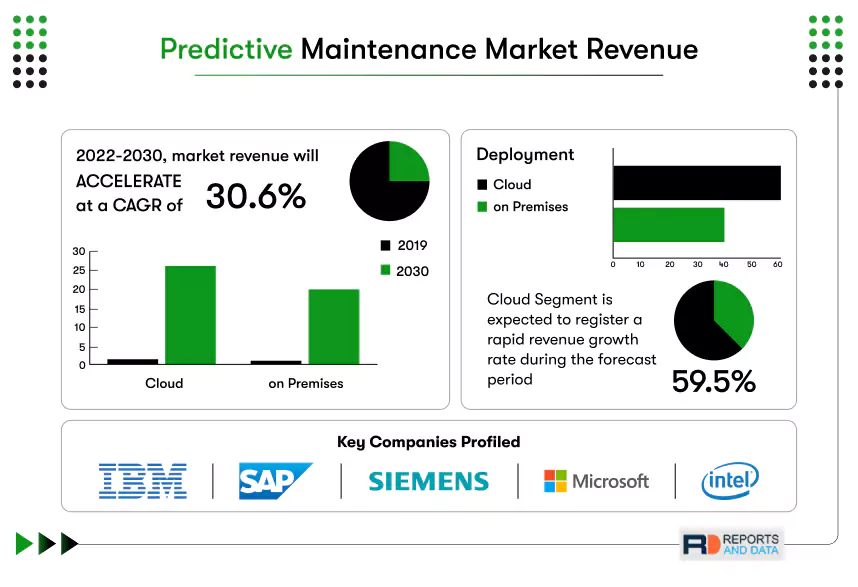
What Are the Benefits of Predictive Maintenance in Fleet Management?
Fleet-based businesses depend on the constant movement of their vehicles. When a vehicle is out of service, it halts deliveries, disrupts operations, and affects the entire supply chain. This is why predictive maintenance for delivery fleets is essential for ensuring business continuity, improving customer experience, and boosting overall profitability.
With the use of predictive analytics for supply chain in delivery, companies can proactively monitor vehicle health and make data-driven decisions about maintenance. Identifying issues before they lead to breakdowns helps businesses reduce downtime, increase fleet efficiency, and maintain reliable service for their customers.
Here is the strategic value of implementing predictive systems:
Reduce unnecessary maintenance costs
Rigid servicing schedules lead to wasted parts and labor. Predictive tools assess real-time wear and performance, allowing teams to act only when it’s truly needed.
Identify failures before they disrupt operations
Real-time tracking of engine performance, battery health, brake condition, and tire pressure helps technicians act early. Issues are addressed before they become emergencies.
Maximize vehicle uptime
Every hour a vehicle stays operational means more fulfilled orders. Predictive models help fleets stay road-ready with fewer interruptions.
Enable delivery operations optimization
Reliable vehicles support smoother route planning, faster delivery cycles, and higher throughput without needing additional resources.
Improve customer confidence and trust
Reliable delivery schedules increase satisfaction. Customers value services that consistently meet expectations.
Support smarter fleet decisions with AI tools
Many operators are now using delivery fleet maintenance software that offers AI-based alerts and usage tracking. These tools help managers stay ahead of problems.
Boost long-term efficiency and safety
Predictive maintenance reduces total fleet servicing costs by up to 25 percent while improving fleet safety, compliance, and operational control.
Predictive systems give growing delivery businesses a clear edge. The value reaches far beyond cost savings, and it defines performance.
Real-World Use Cases of Predictive Maintenance for Delivery Fleets
Predictive maintenance for delivery fleets is no longer a future concept. It is actively used across logistics networks to reduce costs, extend vehicle life, and improve delivery uptime. Both global logistics giants and regional operators are turning to predictive systems because the results are clear and measurable.
DHL’s Predictive Maintenance in Urban Logistics
DHL has implemented IoT-powered sensors and AI models to monitor its urban delivery vans in real time. These systems track engine performance, brake wear, fluid levels, and fuel efficiency across high-traffic city zones. When abnormalities such as rising temperatures or inconsistent braking are detected, the system sends alerts to the service team.
As a result:
- Unplanned service stops have decreased.
- Major repairs are spaced farther apart.
- On-time deliveries have improved, especially in dense urban areas.
This shows how AI in predictive delivery fleet maintenance helps global operators maintain tight delivery schedules with greater accuracy.
Regional Grocery Delivery Fleet: A Practical Example
A mid-sized grocery delivery company operating 120 electric vans installed predictive tracking software to monitor battery health and brake pad degradation. Within two months:
- The system flagged 14 vans for voltage irregularities.
- Maintenance was scheduled during off-peak hours.
- No breakdowns occurred during high-volume delivery windows.
Adopting delivery fleet maintenance software helped the company reduce emergency repair cases by 40 percent and improve driver confidence. With route optimization using predictive analytics, daily route reliability increased, contributing to more deliveries per shift and stronger customer satisfaction.
Measurable Gains from Predictive Maintenance
Early adopters of fleet predictive maintenance are seeing the following benefits:
- Maintenance costs reduced by 20 to 25 percent.
- Vehicle downtime lowered by up to 40 percent.
- Better fuel economy and longer equipment lifespan.
- More accurate scheduling of deliveries and service routines.
- Higher safety standards and better driver morale.
These improvements help logistics teams scale operations without compromising on performance or reliability. Predictive tools do more than prevent failures. They support smarter planning and healthier vehicles.
Many businesses in food delivery are now applying similar logic to improve the customer side. Techniques such as customer behaviour prediction for food recommendations use real-time data to predict intent and optimize the customer journey. Whether maintaining a vehicle or personalizing a menu, predictive thinking is becoming the foundation of smarter delivery systems.
Technologies That Power Predictive Maintenance for Delivery Fleets
Fleet-based businesses rely on their vehicles to be constantly operational, and that reliability depends on technology. Predictive systems are now reshaping how maintenance is handled, using real-time data instead of fixed schedules. For logistics and delivery operators, partnering with the right Logistics Software Development Services provider can ensure the technology stack is optimized to prevent breakdowns before they occur.

1. IoT Sensors and Vehicle Telematics
The process begins inside the vehicle. Internet of Things sensors track metrics such as brake pressure, oil temperature, tire condition, and battery health. These sensors transmit real-time readings to cloud-based telematics dashboards.
Fleet managers can then monitor performance vehicle by vehicle, not by general category. Maintenance is no longer scheduled by mileage alone. It is now based on exact conditions inside each unit.
2. Artificial Intelligence and Machine Learning
Collected data is processed by machine learning algorithms that identify risk signals. Artificial intelligence systems analyze both current and historical patterns.
If the braking system on a specific van shows a recurring vibration before failure, the platform alerts the team before it happens again.
AI in predictive delivery fleet maintenance uses these insights to take proactive steps without relying on manual checks.
3. Seamless Integration With Fleet Tools
Modern systems connect directly with existing platforms such as service scheduling, parts inventory, and technician dispatch.
When a vehicle needs service, the software can trigger work orders, cross-check stock availability, and notify the assigned technician.
These integrations streamline maintenance and support stronger delivery operations.
4. Edge Processing for Localized Alerts
Edge computing allows parts of the AI model to run within the vehicle itself. When connectivity is limited, local processors still evaluate data and notify the driver.
For example, if a delivery van’s engine temperature spikes mid-route, the alert appears immediately on the dashboard. This real-time feedback improves safety and prevents costly damage.
5. Operational Value
When implemented correctly, predictive maintenance for delivery fleets creates clear outcomes. Businesses experience fewer vehicle failures, better part utilization, and improved uptime across the network.
These improvements are enhanced when paired with predictive route optimization, ensuring the right vehicle runs on the best route while minimizing disruption.
Leveraging predictive maintenance for delivery fleets ensures vehicles stay on the road longer, reduces service costs, and boosts customer satisfaction. When paired with warehouse management with predictive analytics, these technologies enable smarter, more efficient delivery networks that contribute to long-term growth and profitability.
Trends Driving the Shift in Predictive Maintenance for Delivery Fleets
Fleet-based businesses are evolving, and predictive maintenance for delivery fleets is at the forefront. Here’s why the shift is happening and how companies are embracing these changes:
Mainstream Adoption of Predictive Maintenance and AI
- More companies, from global giants to small businesses, are adopting predictive maintenance systems.
- The cost of predictive tools is dropping, making it more accessible to all fleet sizes.
- AI in predictive delivery fleet maintenance is now easier to implement, removing the need for specialized data teams.
- The result: predictive systems have moved from being a competitive advantage to a standard practice. Businesses not using these tools risk falling behind in uptime and cost control.
Telematics and Predictive Analytics: A Powerful Duo
- Telematics capture real-time vehicle data (engine performance, GPS, fuel use, etc.).
- Predictive analytics processes this data to detect early signs of failure and improve decision-making.
- Maintenance is scheduled based on actual vehicle conditions, not just calendar dates, reducing downtime and improving fleet performance.
- This integration enables smoother delivery operations optimization by preventing delays before they happen.
Rise of EV Fleets and Battery Health Monitoring
- Electric vehicles (EVs) are becoming more common in delivery fleets.
- Predictive maintenance for delivery fleets now tracks battery charge cycles and temperatures to ensure optimal performance.
- Maintenance alerts are triggered based on battery wear, allowing for proactive service scheduling to avoid disruptions during delivery routes.
- Delivery fleet maintenance software helps ensure EV fleets perform as reliably as their traditional counterparts.
Self-Healing Systems and Autonomous-Ready Technology
- Modern vehicles are becoming self-correcting, detecting and adjusting minor issues on the go.
- When combined with autonomy-ready tech, the system can:
- Diagnose and correct issues automatically.
- Send alerts directly to fleet managers for approval.
- Schedule service based on priority, reducing manual monitoring.
- Diagnose and correct issues automatically.
- This self-healing and autonomous technology support predictive maintenance by reducing the need for constant manual intervention.
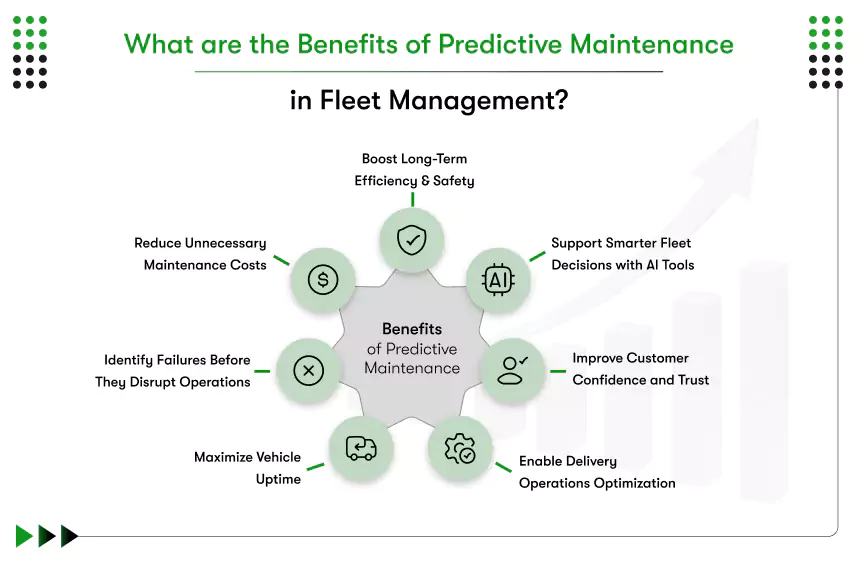
The Benefits of Predictive Maintenance in Fleet Management
- Smarter real-time decisions based on data-driven insights.
- Fewer unplanned breakdowns thanks to early issue detection.
- Longer vehicle lifespan due to proactive maintenance and timely service.
- Better cost control and more predictable maintenance planning.
- Predictive maintenance not only improves fleet performance but also helps scale operations efficiently while maintaining service quality.
As fleet operations continue to evolve, predictive maintenance for delivery fleets becomes a key enabler of efficiency and reliability. By combining real-time insights with proactive maintenance, businesses can reduce downtime, increase vehicle life, and optimize delivery operations.
Additionally, last-mile delivery with predictive analytics ensures that vehicles are not only well-maintained but also following the most efficient paths, further improving delivery performance.
How to Implement Predictive Maintenance for Delivery Fleets Effectively
By now, the value of predictive maintenance for delivery fleets is clear. It helps prevent costly breakdowns, improves reliability, and supports faster delivery times. But knowing its benefits is only half the story. The real impact comes from putting it into action.
Let’s walk through how fleet owners, operations heads, and logistics leaders can bring predictive maintenance to life in 2025 and beyond.
Step 1: Assess Your Data and Telematics Setup
Start by checking what data you already collect. Do your vehicles have telematics systems installed? Are you tracking engine performance, fuel use, or GPS routes?
These data points form the foundation of predictive maintenance for delivery fleets. Without them, your systems will not know what to analyze or predict.
If you’re starting from scratch, begin by installing telematics devices and basic IoT sensors. This allows you to capture useful insights from day one.
Step 2: Choose the Correct Tools and Platforms
Once your data flow is in place, it is time to select your tools. Look for delivery fleet maintenance software that includes AI-powered analytics.
These platforms can:
- Track wear-and-tear signals from each vehicle.
- Alert you when an issue is predicted.
- Automatically assign service tasks or generate reports.
The best systems combine AI in predictive delivery fleet maintenance with dashboard views that are easy for both managers and technicians to understand.
Step 3: Start Small with a Pilot
Before rolling out predictive maintenance across all your vehicles, run a pilot.
- Select 10–20 vehicles from different routes or regions.
- Monitor results for 60–90 days.
- Track alerts vs. actual outcomes.
A focused pilot helps you prove the value of predictive maintenance for delivery fleets without overwhelming your teams. Many companies begin this way and then scale after seeing early ROI.
This approach supports smart, data-backed growth and builds internal confidence for larger investments.
Step 4: Train Technicians and Align Operations
The next step is making sure your people are ready. Your team must know how to use alerts, dashboards, and action plans generated by the system.
Train your technicians and fleet managers to:
- Interpret predictive alerts correctly.
- Respond quickly to early warnings.
- Record their actions for better tracking.
When your entire team aligns with the process, fleet predictive maintenance works a lot more smoothly. From the mechanics to the dispatcher, everyone plays an important role in keeping the fleet up and running.
Step 5: Measure Success and Improve
Finally, track the results of your program. Review key metrics such as:
- Maintenance cost per vehicle.
- The number of unplanned breakdowns.
- Vehicle uptime improvements.
This will help you answer an important question: what are the advantages of predictive maintenance in fleet management? The more data you collect, the more your system learns. Over time, your predictions become more accurate and your decision-making more confident.
Connecting this process with your other logistics efforts, such as AI for demand forecasting in the logistics, creates a full-circle system. Every part of your operation becomes smarter and more efficient.
Build a More Reliable Fleet With the Right Partner
The future of fleet management is about more than just faster deliveries; it’s about smarter, more efficient operations. Predictive maintenance for delivery fleets enables businesses to shift from reactive repairs to proactive solutions, preventing costly breakdowns before they occur.
Real-time data and AI-driven insights allow companies to optimize vehicle health, reduce downtime, and boost fleet performance. These advancements lead to significant cost savings, increased reliability, and improved customer satisfaction through more dependable delivery times.
To stay competitive, businesses must embrace these technologies. Kody Technolab specializes in Logistics predictive analytics consulting, developing tailored predictive maintenance solutions that integrate seamlessly with your current systems.
Our AI-powered tools provide the insights you need to maintain a high-performing fleet. Ready to elevate your fleet operations and drive growth? Contact Kody Technolab today to learn how we can help transform your delivery processes.
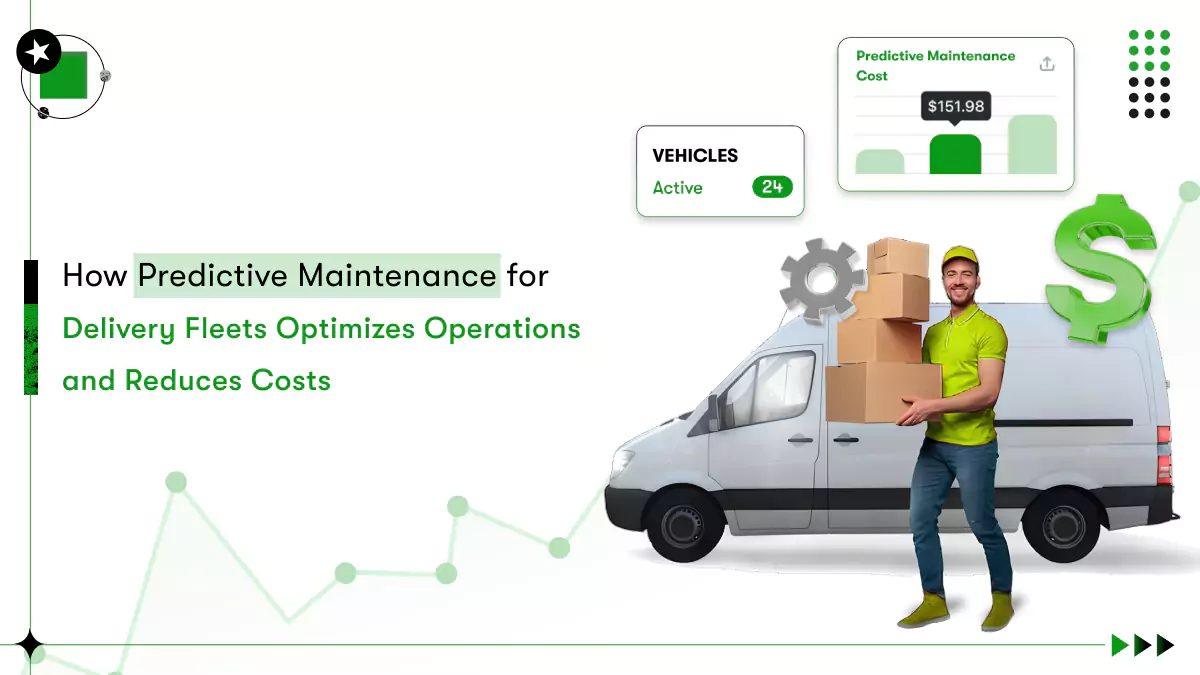



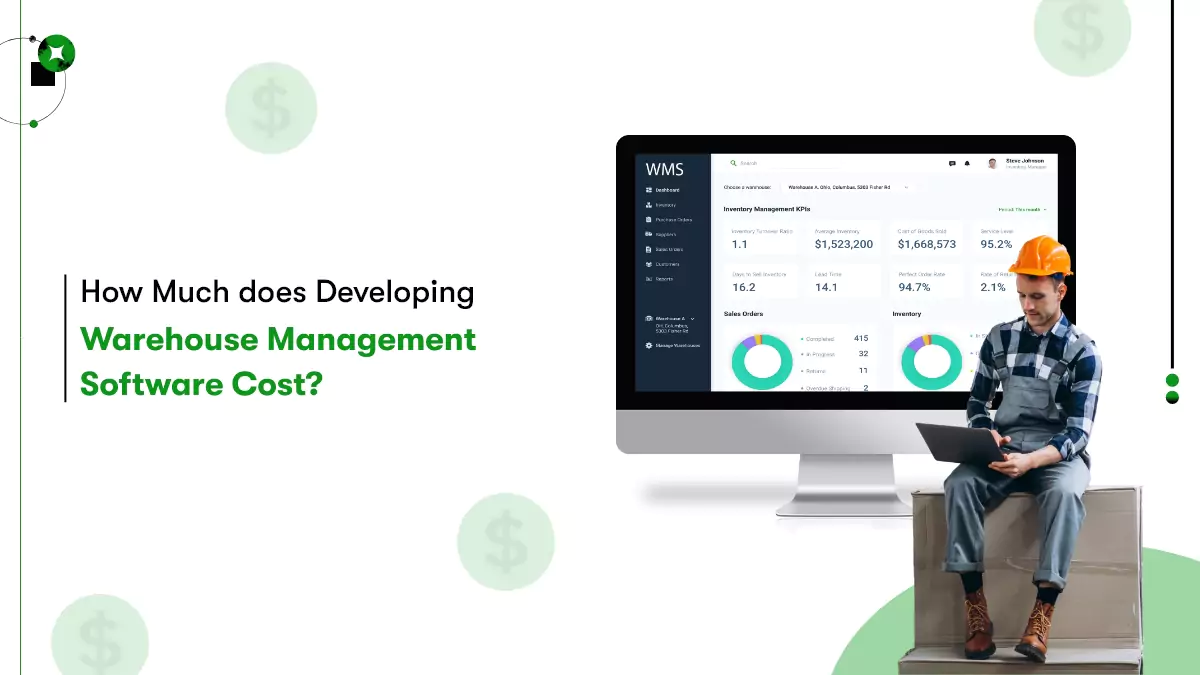
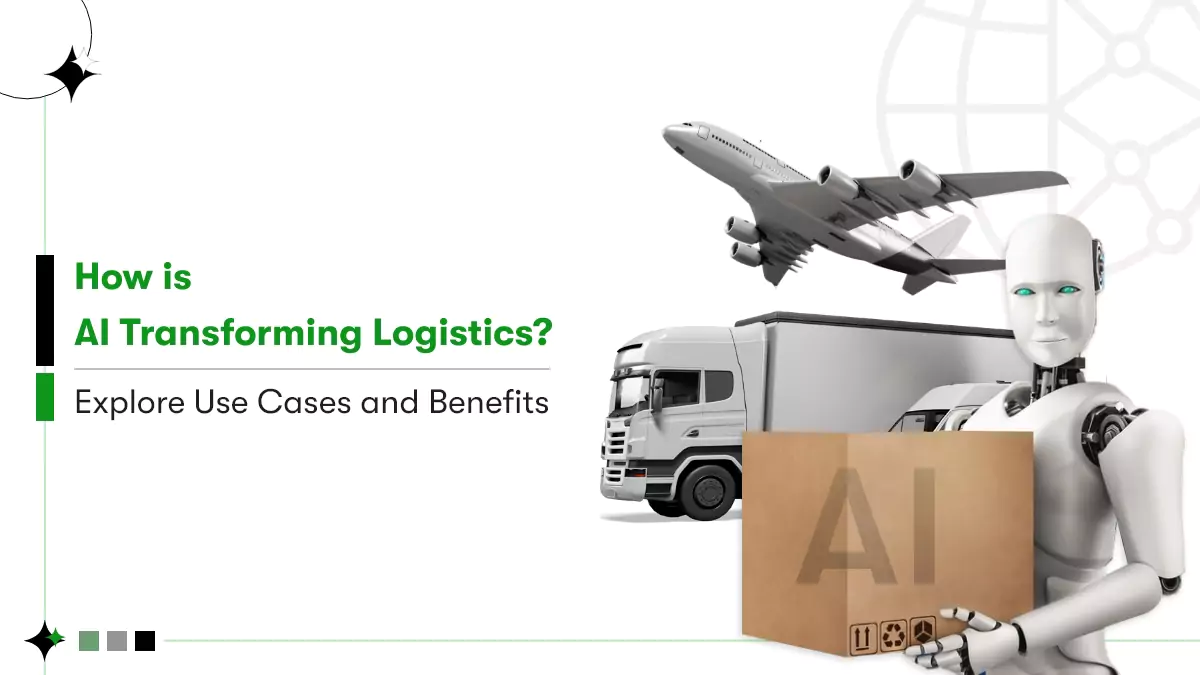






 Contact Information
Contact Information